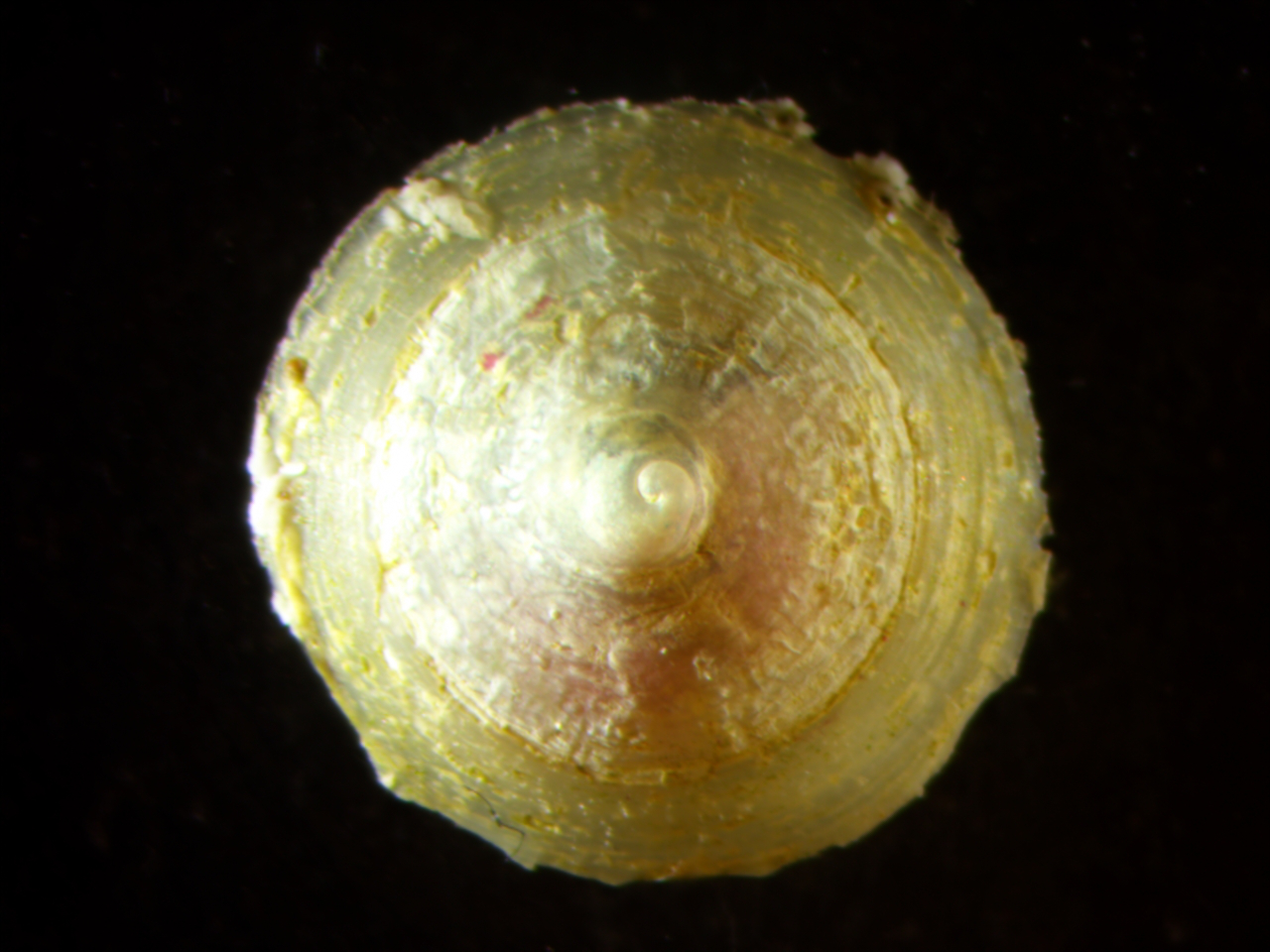Calyptraea fastigiata Gould, 1846Common name(s): Cup-and-saucer snail, Pacific chinese hat snail |
|
| Synonyms: | 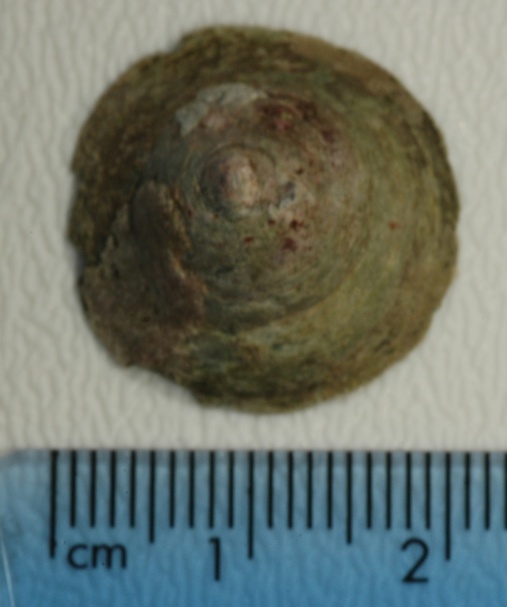 |
| Phylum Mollusca
Class Gastropoda Subclass Prosobranchia Order Mesogastropoda Suborder Taenioglossa Family Calyptraeidae |
|
| Calyptraea fastigiata shell (dead) collected subtidally near Northwest Island | |
| (Photo by: Dave Cowles, July 2005) | |
How to Distinguish from Similar Species: Slipper shells such as Crepidula adunca have a septum inside but the shells are more flattened, and the septum also is mostly flat rather than spiral. The shells of chinese cap limpet Acmaea mitra has a similar shell shape but no septum inside and usually has steeper sides and a higher apex..
Geographical Range: Alaska to California
Depth Range: Occasionally intertidal, mostly subtidal at 18 to 137 m
Habitat: Attached to rocks, dead shells, or sometimes to crabs
Biology/Natural
History: As with other
slipper shells, this species is a filter feeder with special gills.
| Return to: | |||
| Main Page | Alphabetic Index | Systematic Index | Glossary |
References:
Dichotomous Keys:Kozloff 1987, 1996
General References:
Scientific
Articles:
Web sites:
General Notes and Observations: Locations, abundances, unusual behaviors:
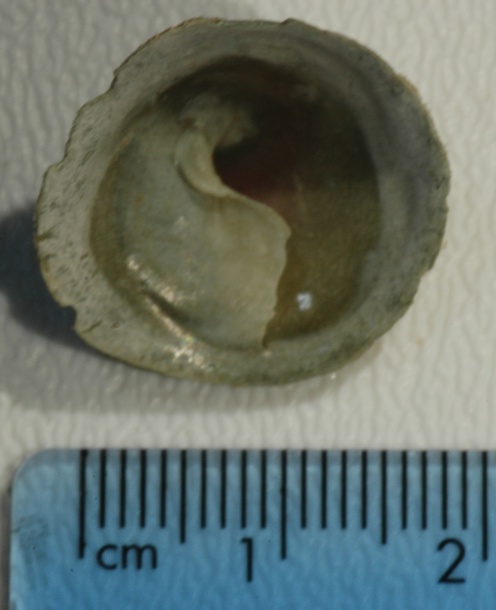
Inside the shell there is a spiral septum,
or shelf, which twists about 1/2 revolution
| This 1.8 cm-diameter individual was collected and photographed by Dave Cowles, July 2020 |
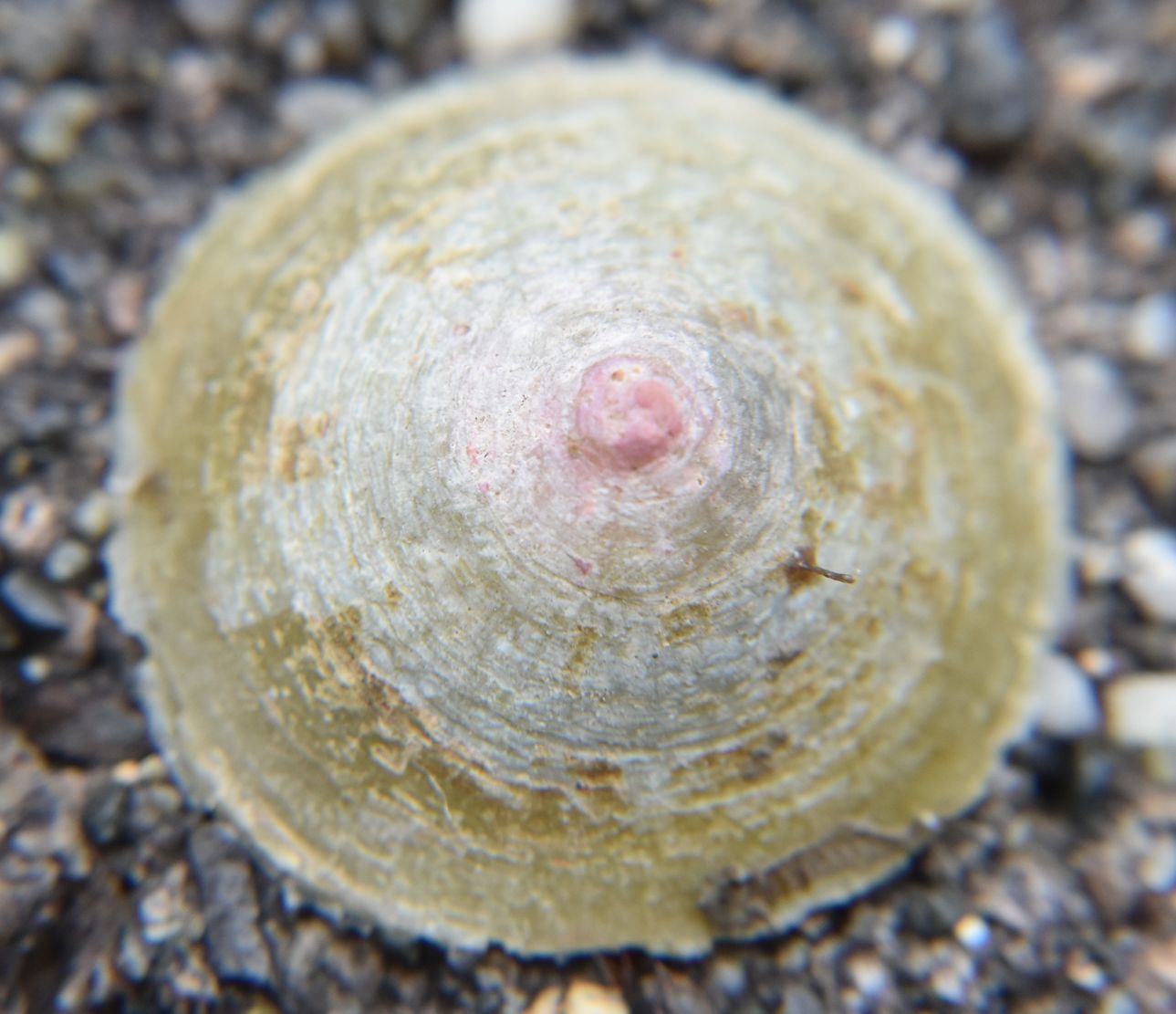 |
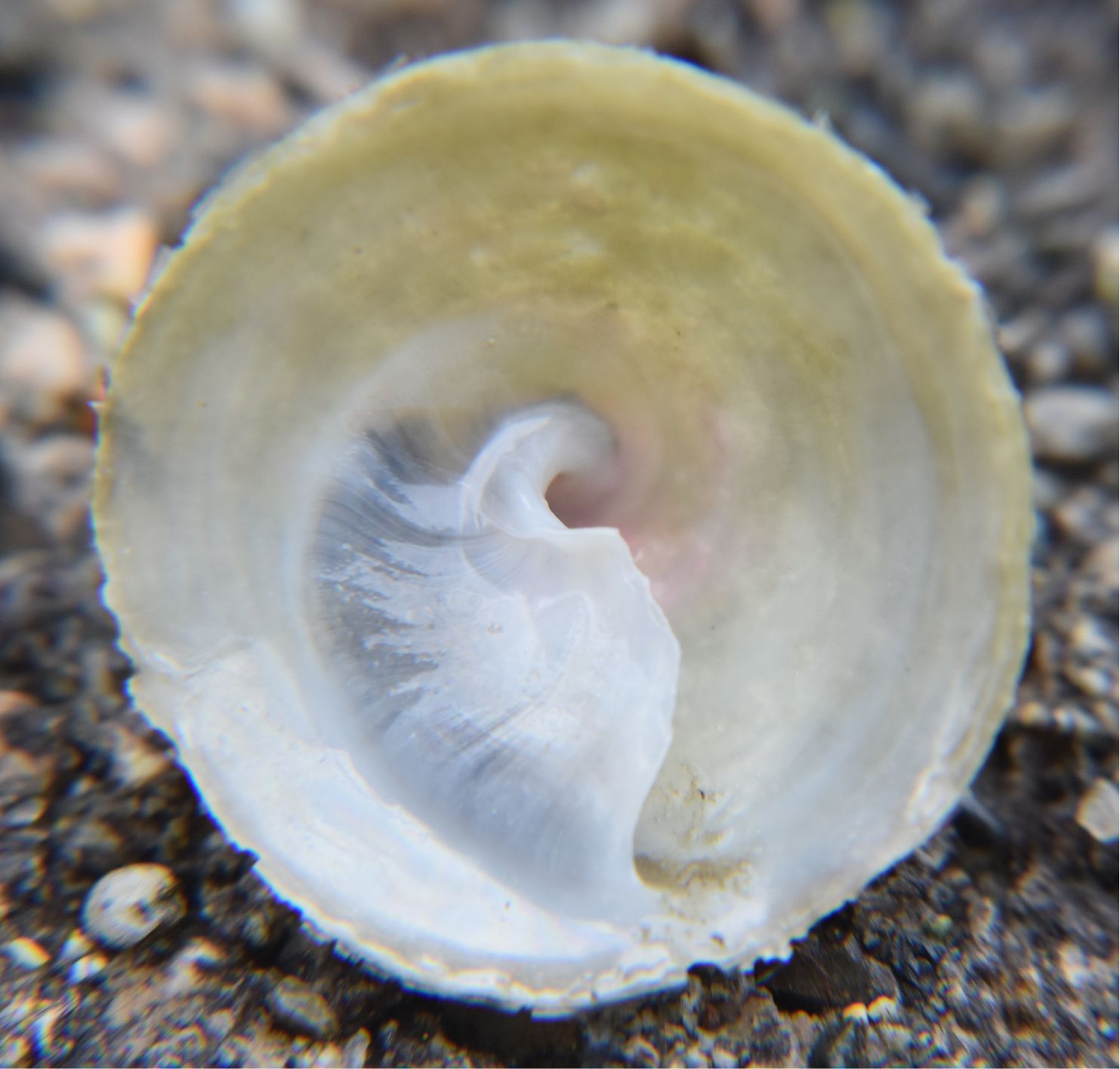
In the small, live individual below (1 cm
diameter) a light yellow periostracum
can be seen clinging to the shell plus the tip (apex)
or protoconch
of the shell, which is the remains of the shell the animal first formed
after the larva settled, shows a clear spiral, demonstrating the
species'
affinity to other snails even though the external parts of its shell
are
not coiled as an adult. The protoconch
typically wears off by the time the shell reaches full size so the
spiral
is generally not as evident. Photo by Dave Cowles, August 2021
|
Authors and Editors of Page:
Dave Cowles (2005): Created original page
